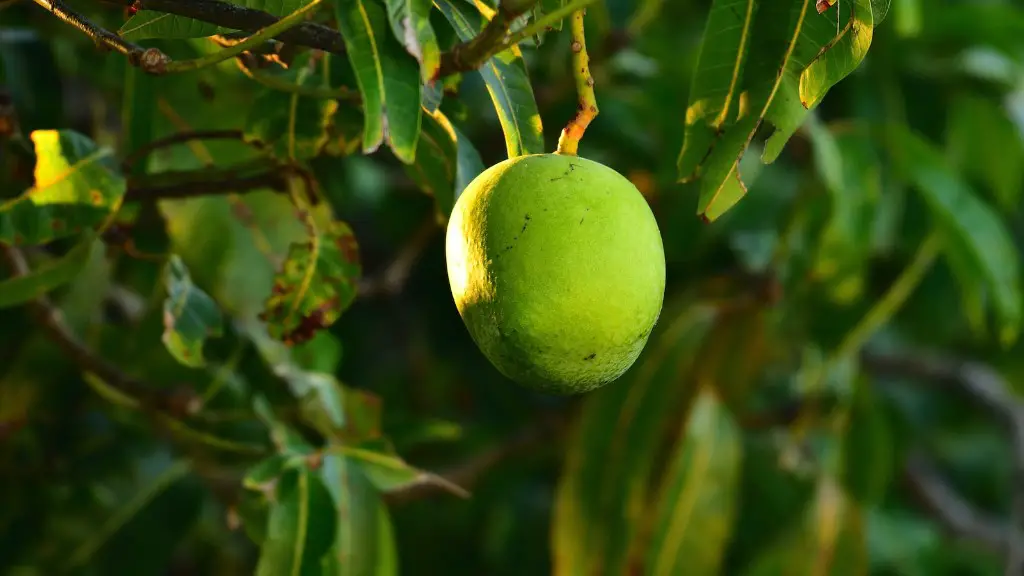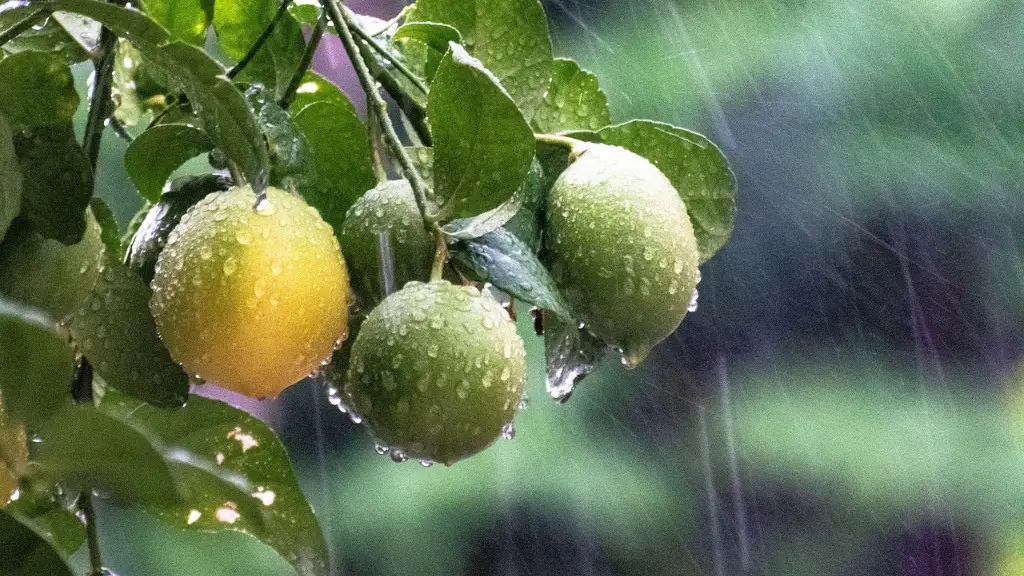Parts of the Avocado Tree
When you think of an avocado tree, you probably imagine a lush green tree with big, bright green fruit hanging off it. But an avocado tree is much more than its fruit. An avocado tree is an evergreen, meaning that its leaves are always green. It can reach heights of up to about 80 feet, and it usually has a central stem that branches out. The leaves of an avocado tree can be anywhere from four to eight inches in length and are a dark glossy green color. The avocado tree also has delicate white flowers with five petals.
The trunk of an avocado tree is thick and can reach between one to four feet in diameter. Its bark is rough and can range in color from dark grey to brown. The tree’s branches are very strong and the leaves are dark and leathery. In drier climates, the tree may have more of a gnarled appearance, but in moist climates its branches are more likely to be straighter. The tree also produces small, round fruit that can range in color from green to yellow to black.
Care and Maintenance of the Avocado Tree
The best way to ensure the health of an avocado tree is to provide it with proper care and maintenance. This includes regular pruning and fertilizing. Pruning should be done in order to promote new growth, as well as to maintain its shape and size. Fertilizing should be done to ensure the tree is receiving the necessary nutrients for optimal growth. In some cases, a fungicide may also need to be applied to help protect the tree from disease.
When first planting an avocado tree, be sure to choose a spot that gets plenty of sunlight. Avocado trees need at least 6 hours of full sun each day in order to thrive. Soil should be well draining and fertile, and it should be kept moist but not soggy. Water should be applied on a regular basis, especially during periods of drought or hot weather.
In order to keep an avocado tree healthy, it’s important to inspect it on a regular basis. Look for signs of leaf discoloration, damage, or disease. If any problems are found, be sure to address them immediately. Regular fertilizing, pruning, and pest control can also help to keep an avocado tree healthy.
Yields of Avocado Trees
The yields of an avocado tree typically depend on several factors, including the cultivar and the care provided. Some avocado trees can produce up to 100 fruits a year, while others may produce less. Generally, the more care and attention you give to your tree, the higher yield it will produce. The quality of the fruit itself will also depend largely on how well the tree is cared for.
Another important factor to consider is the cultivar you choose. Some cultivars may have a higher yield than others, so it’s important to do your research when selecting a tree. Additionally, different types of avocado trees may ripen at different times, so if you’re looking for a longer harvest season, multiple types of trees may need to be planted.
Avocado Pests and Diseases
Avocado trees can be affected by both pests and diseases. Common pests include aphids, mealybugs, scale, and caterpillars. Numerous diseases can also affect an avocado tree, such as root rot, canker, and brown rot. In order to protect your tree from pests or diseases, it’s important to monitor it regularly and take preventative measures. It’s also important to keep the area around the tree free of debris, which can attract pests.
Pests and diseases can be managed through the use of chemical sprays, but it’s best to opt for organic or natural methods where possible. Encouraging natural predators, such as ladybugs or lacewings, can help to keep pests at bay. Adding compost to the soil can also help to improve the overall health of the tree, which can make it more resistant to pests and diseases.
Harvest and Storage of Avocado Fruit
The harvest time of an avocado tree can vary depending on the cultivar and the climate in which it is grown. Generally, avocado trees are ready to harvest between late summer and early winter. It’s important to wait until the fruit is fully mature before harvesting, as this ensures maximum flavor and nutrient content. Once the fruit has been harvested, it can be stored in a cool, dry place for up to a few weeks.
It’s also important to practice proper ripening techniques for avocados. If the fruit is picked too early, it will not ripen and therefore will not be edible. If the fruit is overripe, it may be too mushy or may start to rot. Therefore, it’s best to wait until the fruit is ripe before picking and storing it.
Nutritional Value of Avocados
Avocados are a great source of nutrition. They are high in vitamins and minerals, and they contain healthy fats, protein, and fiber. A single avocado can provide up to 20% of the recommended daily intake of vitamins A, C, and E, as well as B vitamins. They also contain carotenoids, which are beneficial antioxidants that can help protect against certain illnesses. Additionally, avocados are high in potassium and low in sodium, making them an excellent choice for people with high blood pressure.
Avocados are also rich in healthy fats, which can help to lower cholesterol and reduce the risk of heart disease. The fiber found in avocados can also help to keep you feeling full for longer, which can aid in weight management. Finally, avocados are a good source of protein, which can help to build and maintain muscle mass.
Culinary Uses of Avocado
Avocados have many culinary uses. They can be eaten on their own, used in salads or spread on toast, mashed into guacamole, or used as a topping for sandwiches and burgers. Avocado can also be used in smoothies, juices, and desserts. Additionally, the oil from an avocado can be used in cooking, baking, and as a salad dressing.
In many cultures, avocados are eaten or prepared with other ingredients. For example, in Mexico, avocados are often combined with other ingredients such as tomatoes, onions, and lime juice for a delicious and nutritious dish. In India, avocados are used in a variety of dishes, including chutneys, salads, and curries. In Indonesia, avocados are used to make a refreshing dessert called es teler.
Health Benefits of Avocado
Avocados are known for their many health benefits. They contain healthy fats and other nutrients that can help to improve cardiovascular health, lower cholesterol, reduce inflammation, and boost immunity. Avocados are also a source of dietary fiber, which is important for digestive health. Additionally, avocados are rich in carotenoids, which have been linked to reduced risk of cancer and other diseases.
Avocados are also great for skin health. The vitamin E in avocados can help to reduce wrinkles and improve skin elasticity. The healthy fats found in avocados can help to reduce skin inflammation, while the antioxidants can help to protect the skin from sun damage. Additionally, avocados are high in magnesium, which can help to reduce stress and promote relaxation.
Risks of Eating Avocado
Although there are numerous benefits to eating avocados, as with any food there are also potential risks. It’s important to note that avocados are high in fat and calories and should be eaten in moderation. Additionally, some people may be allergic to avocado, and certain compounds present in the fruit can cause an allergic reaction. Additionally, the high fat content in avocados can lead to a risk of higher cholesterol if not eaten in moderation.
It’s also important to be aware of the risk of bacterial contamination when eating avocados. Avocados can contain listeria, which is a type of bacteria that can cause food poisoning. It’s especially important to be cautious when eating raw avocados, such as in guacamole, as there is a higher risk of contamination. It’s therefore best to store and prepare avocados properly to reduce any risk of contamination.


